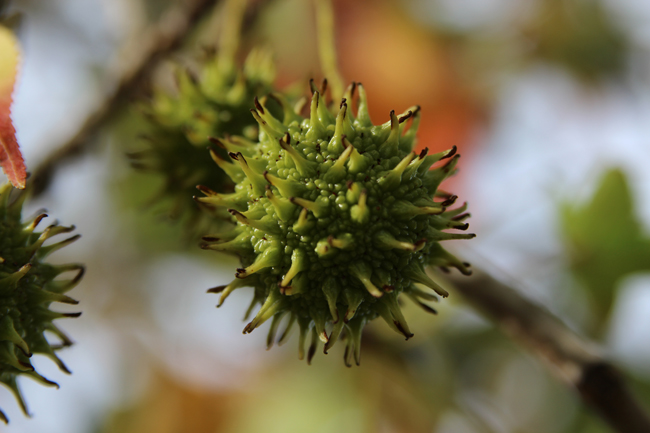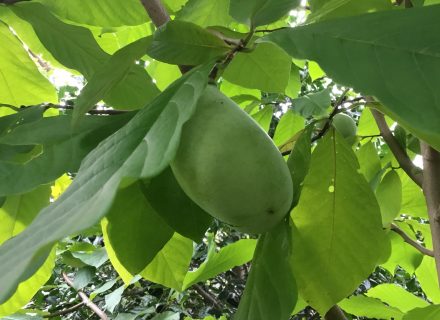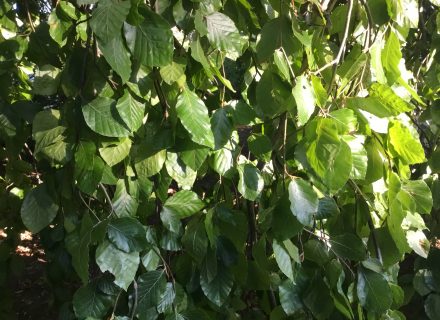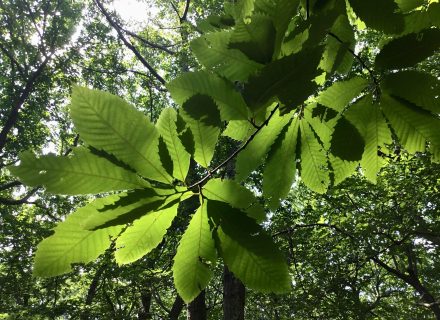Latin Name: Liquidambar styraciflua
Locations: Three large sweetgums flourish at the edge of the Library parking lot. Four other trees, planted by Friends of Trees, can be spotted along Manhanset Road by Bonnie Lane. Another specimen grows on the grounds of Union Chapel.
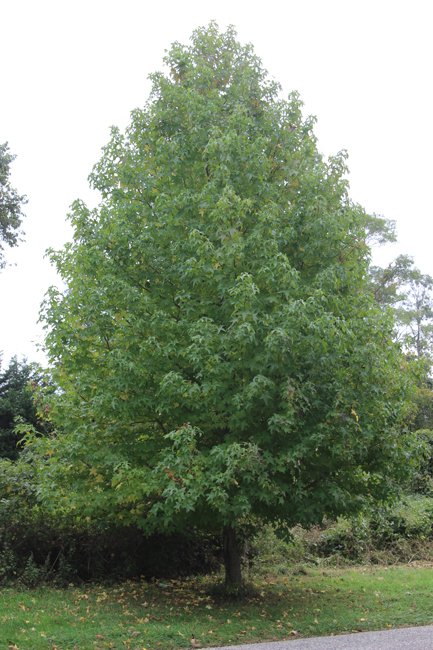
Tree stats: The native sweetgum ranges from Massachusetts to northern Florida and west to Missouri, Louisiana, and east Texas. It also occurs in Central America and Panama. The tree can grow to 100 feet high with a pyramidal shape up to 50 feet wide at the base. Sweetgum’s big leaves are distinctively star-shaped with five to seven points. In the fall their rich green color can turn into a dazzling range of reds, oranges, purples, and yellows, sometimes all at the same time. The tree’s spiky, Sputnik-like fruits dangle from the branches like ominous ornaments. Shiny and green in the summer, they become brown, hard, and skeletal in the fall as the seeds are dispersed. Look for them on the ground around the Library trees.
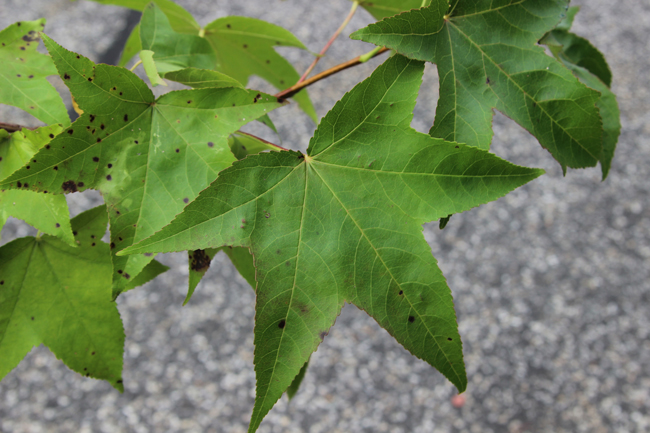
There’s gold in them thar trees: Like the sugar maple, sweetgum releases sap when its bark is punctured. The tree’s Latin name, Liquidambar, describes this sap as liquid amber, a substance that for centuries has had multiple uses. In ancient Mexico it was mixed with tobacco to create a relaxing concoction. The conquistador Hernán Cortés was among the first Europeans to sample its pleasures in a ceremonial meeting with the Aztec emperor Moctezuma II. Native Americans favored the resin as chewing gum and for medicinal purposes. In the 20th century, the sap was still cultivated commercially. In a 1930 newspaper ad, the Dudley Sweet Gum Company from Tennessee was offering “$1.50 per pound for Sweet Gum.” They were seeking 25,000 pounds of sap and specified that it had to be clean without “any dirt or bark in it.”
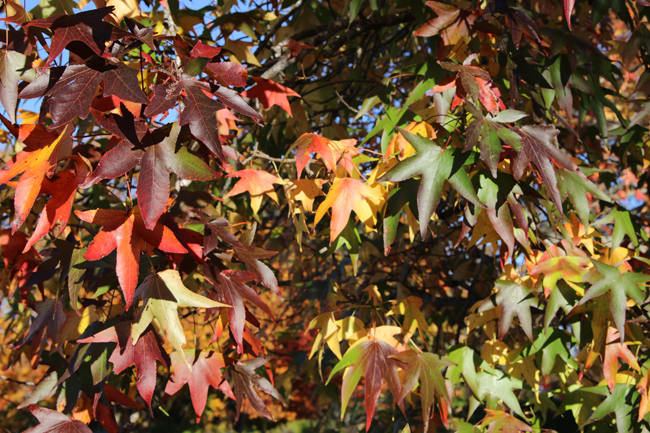
Sweetgum power: Sweetgum’s sap, wood and fruit continue to be useful. The tree’s sap is being tested for potential anti-inflammatory, anti-microbial, and anti-fungal properties. Its wood is valued for cabinetry, paneling, and musical instruments, and online gardeners rave about spreading the dried fruit around garden borders to deter snails and slugs. One website also suggests making a creative wreath out of the prickly fruit. Just don’t step or sit on it.
Photos: Tim Purtell

